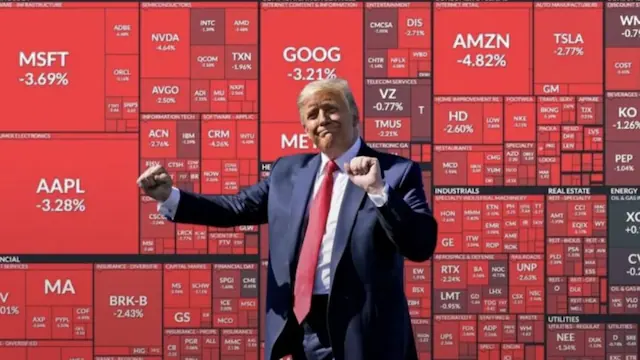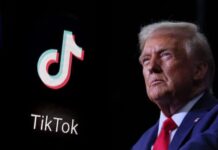Any doubts on Wall Street were renewed when President Donald Trump ordered another round of mass tariffs as part of his second-term agenda. The self-determined tariff tariffs that do not go through traditional negotiations and the threat to place a 55 percent duty on Chinese imports has led to new uncertainty in his proposal. This confusion takes place when the stock market is already experiencing traits such as inflation fears, geopolitical issues and changes in consumer demand.
Markets have reacted to it with greater volatility. The S&P 500, Nasdaq Composite and Dow Jones Industrial Average all ended lower on June 11 with the S&P breaking a three day streak of gains. These drops, however small, are an indication that investors are concerned about the overall thrust of the trade policy, and what it would mean in terms of the economy.
Market Reaction
The short-term market reaction toward tariff declarations of Trump was careful. S&P 500 decreased by 0.27%, Nasdaq decreased by 0.5% and Dow went flat. Although these figures do not show a crash, they still point to the sensitivity the market is still to tariff headlines. Interestingly, the wider indices are comprehensively just below 2% of all-time highs recorded earlier in the year, which further demonstrates the extortionate mantle on the bullish sentiment and the threats of policies.
The major concerns that attracted attention of investors concerned the increasing cost of imports under tariffs and the risks of the so called ripple effects in other industries such as tech industry, manufacturing and retail. The CEO of RH (Restoration Hardware), Gary Friedman defined the time after the announcement of the tariffs as chaotic and unpredictable with the cases of delayed shipments, costs absorption hardships, and disintegration of the supply chains.
Sector-Wise Impact: Tech and Retail in the Crosshairs
Tariffs have uneven effects across sectors, with tech and retail bearing the brunt. Apple, for instance, has been actively rerouting iPhone production through India to avoid Chinese export routes now heavily tariffed. According to Reuters, 97% of Foxconn’s iPhone exports from India between March and May were destined for the US, a sharp increase from the usual 50% average.
Meanwhile, retailers like RH, which depend heavily on Chinese manufacturing, have reported temporary disruptions. Some suppliers paused shipments altogether following reciprocal tariffs announced by China. Though RH managed a surprise Q1 profit, it warned of a 6-point revenue hit in Q2 due to these disruptions.
These effects have spooked investors, many of whom are rotating away from consumer discretionary and tech stocks toward energy, utilities, and domestic-heavy industrials.
Investor Sentiment and Inflationary Pressure
Financial leaders are also adjusting their forecasts. JPMorgan Chase CEO Jamie Dimon commented that the tariffs may not “sink the ship,” but could “make the soft landing a little bit softer.” Dimon, along with other executives, anticipates that tariffs will contribute to inflation, lower employment, and pressure corporate margins.
Indeed, consumer price index (CPI) data from May showed only a 0.1% monthly increase, slightly under expectations. However, analysts warn that as tariffs on steel, aluminum, autos, and electronics begin to filter through supply chains, inflation could spike again in the coming months.
Court Rulings and Policy Ambiguity
A major complicating factor is the legal status of Trump’s tariffs. A federal appeals court recently reinstated the tariffs after a lower court ruled their enactment “unlawful.” This legal back-and-forth adds another layer of unpredictability, particularly for multinational corporations trying to plan their fiscal year amid shifting duties and enforcement standards.
Meanwhile, the White House has signaled potential exemptions for nations negotiating in “good faith,” further clouding the overall trade landscape. Vietnam, South Korea, and the UK are all actively trying to avoid being hit with higher duties, but little is certain until Trump’s self-imposed July 9 deadline.
Global Ramifications and Capital Flight
Outside the US, trade partners are launching task forces and accelerating bilateral deals to mitigate exposure. South Korea, for instance, has created an interagency group to manage upcoming negotiations with the US, while Japan is optimistic that its trade deal will shield its auto industry from new levies.
Investors have also begun reallocating capital. Global funds are seeing mild outflows from US equities into emerging markets and European assets, reflecting fears that prolonged trade friction could limit earnings growth in US multinationals.








